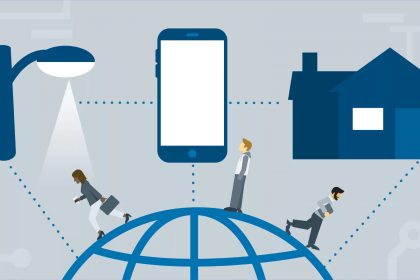World Wide Web became available to the public in 1991. The Internet was there at the time, but people didn’t use it to link one document to another. Network WWW technology uses the infrastructure capabilities of the Internet to communicate between the client and the server. It has become an indispensable tool for users around the world.
World Wide Web tech: origins
Sir Timothy John Berners-Lee was the inventor of this remarkable instrument, an English physicist. He created a system in which interconnected hypertext documents became available via the Internet or the so-called worldwide communication infrastructure. A single interface for interaction with any type of basic equipment or system has simplified the work and communication of users.
Berners-Lee also released the first versions of the HTTP protocol, HTML and URL to access information in various formats, and he used only one program, namely a web browser.
Each of these tools is relevant even today:
- HTML (hypertext mark-up language) is a publication format that helps developers in documents converting and links to other resources.
- URL (a common resource pointer) is an address, and it is unique for every Internet resource, such as a web page or a picture file.
- HTTP (application layer protocol) helps programmers query and transmit HTML documents between browsers and web servers via the Internet.
Hypertext documents are generally referred to as web pages, which are mostly text documents that the developers have formatted and annotated in a hypertext language. Web pages can include links to images, videos and software components that users see as projections in their web browser applications. Hyperlinks built into the text help users navigate between homogeneous pages and websites. If the developers post multiple pages within the boundaries of a common domain, then the website is formed as a result.

WWW technology: development prospects
The Internet network has changed since its creation qualitatively. The first websites consisted of simple pages and included only words and light images, and were similar to online books or magazines. Most people could not create their own web pages because they would have to form a manually HTML code. Nevertheless, users wanted to communicate and share information with each other more often and in more detail. As a result, social networks and blogs formed. Creating personal content and distributing it has become a simpler and easy task. This is a new type of Internet and it has come to be known as Web 2.0.
Even today, this technology continues to develop. Search engines have started to read text, understand and process information much better. They have found unique ways to promote optimal content and can even demonstrate things that can potentially interest the buyer.
Berners-Lee believes that the future of the World Wide Web lies in the creation of a so-called semantic network that can automate the testing of relationships between different sets of data. The semantic network will transfer routine tasks to machines and thus greatly facilitate the search, exchange and integration of information. Users will then be able to use huge information resources with much more useful and tangible efficiency, and they will help people to engage in creative activities.
This inventor believes that the security, expansion and easy availability of the network for all users is the most general advantage of this WWW technology. Sir Timothy, along with Rosemary Leith, even founded the World Wide Web Foundation, which fights for these principles, in 2009.





